Oculus VR,Hard Soap Hard Soap (1977) the company that is single-handedly responsible for the modern virtual reality movement, announced in early January that its long awaited Rift headset would retail for a whooping $599. The admission sparked outrage online, leaving many to wonder what drove Oculus to that final asking price and when did the promise of a sub-$400 headset evaporate.
Some went so far as to label the Rift, and VR as a whole, a failure before it even arrives.
A month and a half later, HTC said its Vive VR headset would sell for $799 - a full $200 more than the Rift that had everyone up in arms, though packing motion controllers which Oculus will sell later separately. And just this past week, Sony revealed its virtual reality headset, the aptly-named PlayStation VR, would arrive in October for $399. A few days later, Sony corrected themselves by announcing a PlayStation VR bundle that includes everything needed to get up and running - sans a PlayStation 4 - for an additional hundred bucks.
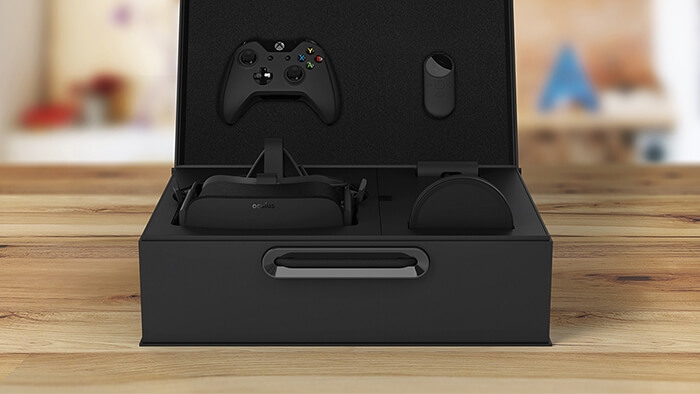
Samsung, meanwhile, has been selling the Gear VR headset (which requires a Samsung smartphone) since November priced at just $99.
What seems pretty cut-and-dry gets complicated in a hurry when you consider that none of these are standalone platforms; they all rely on additional hardware - be it a computer, a game console or a smartphone - to power the experience.
To help make sense of it all, we've gone through the hassle of analyzing everything to see what the true cost of ownership looks like. Some of the findings may surprise you.
The $599 Oculus Rift kit arrives next week and includes the headset itself with built-in headphones and mic, a remote, a sensor, an Xbox One controller, a copy of EVE: Valkyrie, a copy of Lucky's Tale and all of the necessary cables to connect the headset to your computer.
Oculus VR recommends a PC with an Intel Core i5-4590 equivalent or greater CPU, an Nvidia GTX 970 / AMD R9 290 equivalent or better video card, at least 8GB of RAM, a compatible HDMI 1.3 video output, three USB 3.0 ports, a USB 2.0 port and at least Windows 7 SP1 64-bit.
Those in need of a new computer to power the Rift have a few choices. If building or upgrading an existing machine isn't an option, Oculus VR offers a selection of bundles to choose from that include the core Rift kit and a PC that meets its recommended specifications.
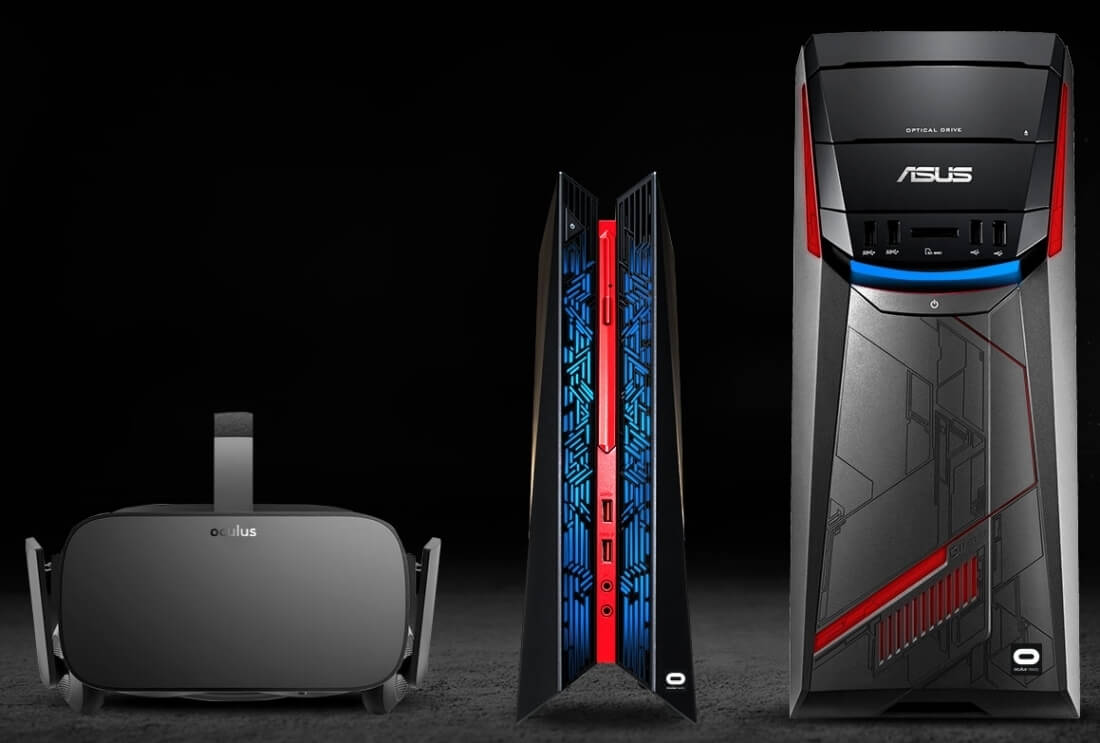
Pricing starts at $1,499 for the Asus G11CD-B11 bundle which, when compared with building your own gaming PC, is a surprisingly good deal. Don't believe me? Consider this.
Using Newegg, I put together a system consisting of an Intel Core i5-4590, an Nvidia GTX 970 from Zotac, a Gigabyte GA-B85M-DS3H-A motherboard, 16GB of G.Skill DDR3 memory, a 240GB Kingston SSD, a 700W EVGA PSU, a Samsung DVD drive and a copy of Windows 10 Home 64-bit, all loaded in a Thermaltake V3 Black Edition case for $888.66. Add the cost of the Rift kit and you've got a total of $1,487.66 - just a few bucks cheaper than the entry-level Rift PC bundle.
The Asus G11CD-B11 desktop includes an Intel Core i5-6400, an Nvidia GeForce GTX 970, 8GB of DDR4 RAM and a 1TB 7,200RPM hard drive. I'd personally still lean towards the custom-built configuration as it offers more RAM and a faster - albeit less spacious - storage drive but as you can see, they're matched much more evenly than you might have anticipated.
The other option, of course, is no new PC at all. If you existing gaming PC already meets or exceeds the recommended specifications, you'll need to fork over just $599 to get started with the Rift.
Developed in collaboration with Valve, the HTC Vive will arrive in early April. In addition to the headset, buyers get two wireless controllers and two base station tracking sensors as well as copies of Tilt Brush, Fantastic Contraption and Job Simulator.
Like the Rift, the Vive requires a respectable computer to drive the visuals. In fact, HTC recommends the exact same CPU and GPU as Oculus VR but with half the RAM at 4GB. A PC also needs at least one USB 2.0 port, HDMI 1.4 or DisplayPort 1.2 or newer and Windows 7 SP1 or later.
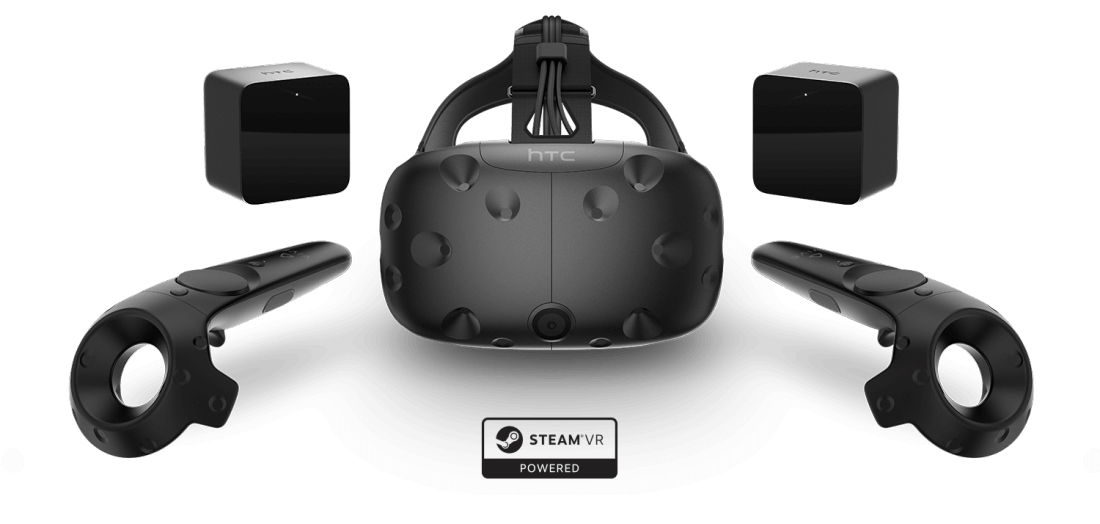
HTC has also partnered with several PC makers, offering up "virtual reality certified" machines that are Vive-ready. The cheapest we could find was the HP Envy Desktop 750-220 which retails for $1000. For your money, you get an Intel Core i5-6400, an Nvidia GeForce GTX 970 GPU, 8GB of DDR3 and a 1TB 7,200RPM hard drive.
Alternately, the custom Newegg machine configured for the Rift would work equally as well with the Vive and set you back less than $900.
In summary, you're looking at $1,798.99 for the HP Envy and the HTC Vive or $1,687.66 for the custom-built machine plus the Vive. Or again, if you already have a capable gaming PC that meets the recommended specs, you only need to shell out $799 for HTC's VR platform.
Sony's virtual reality platform will arrive later this year (October, to be exact) at a price of $399.99 for the core kit or $499.99 for the PlayStation VR bundle. What's the difference and which should you spring for?
The core PlayStation VR kit includes the headset, all of the necessary cabling, a set of stereo headphones and a PlayStation VR demo disc. Critically, the core kit doesn't include the PlayStation Camera which is a must-have accessory for Sony's VR platform. The $499.00 bundle includes everything listed above as well as the PlayStation Camera, two PlayStation Move motion controllers and one of the platform's launch titles, PlayStation VR Worlds.

If you already happen to have a PlayStation Camera, there's very little reason to go with the more expensive bundle.
Regardless of which kit you choose, you'll also need a PlayStation 4 console to power it. As of writing, the cheapest price on a PlayStation 4 with 500GB of storage is $349 which also includes a copy of Call of Duty: Black Ops III.
To recap, you'll spend at least $399.99 for the PlayStation VR core kit assuming you already have a PlayStation 4 and a PlayStation Camera. If you don't have the camera and also want the Move motion controllers (they aren't required as you can instead use the PS4's DualShock controllers), be prepared to spend $499.99.
If you don't already have a PlayStation 4, you'll be looking at spending a minimum of $798.77 for the PlayStation VR core kit, a PlayStation 4 console and a PlayStation Camera or $848.88 if you buy the PlayStation VR bundle to get the camera and the two Move motion controllers.
Samsung's Gear VR is the only standalone VR device of the bunch and the only one currently on the market. Despite being developed in collaboration with Oculus VR, it offers the least immersive experience.
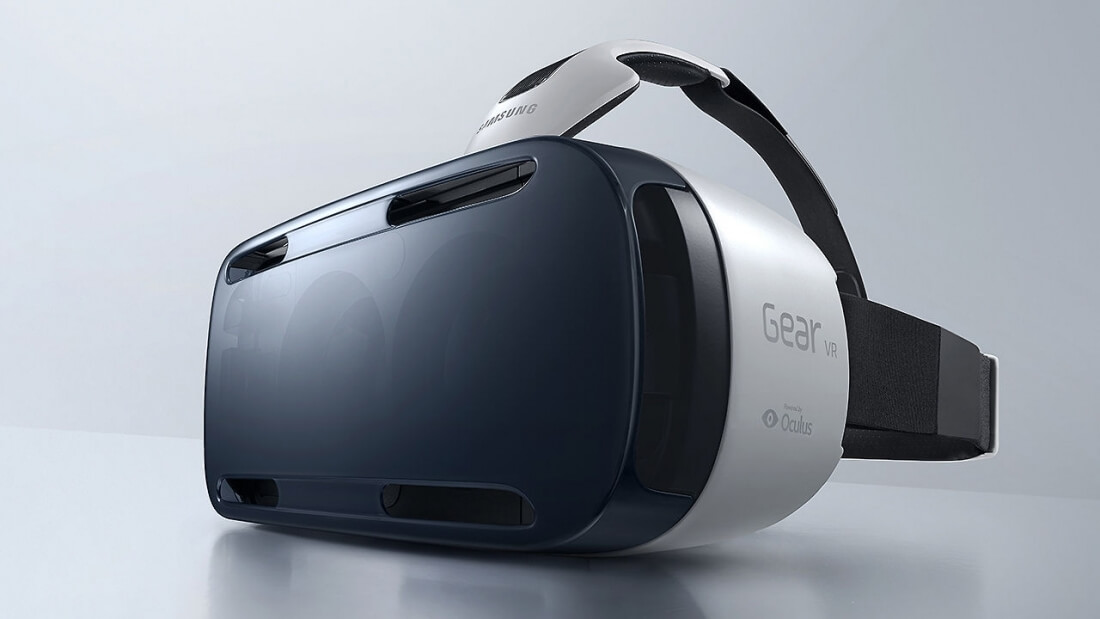
The good news is that it's also by far the cheapest of the devices discussed here today, assuming of course that you already own the necessary supporting hardware. Here's the breakdown.
The Gear VR headset itself sells for $99.99. Rather than rely on a desktop / laptop computer or game console, the Gear VR requires a newer model Galaxy smartphone which snaps into the front of the device. As of writing, the Gear VR is compatible with the following handsets:
Again, the good news here is that if you own one of the phones listed above, you'll only need to shell out $99.99 to join the VR club.
If not, the cheapest compatible phone - the Galaxy S6 32GB - will add $579.99* to the equation, bringing the total cost of entry to $679.98. On the high end, the brand new Galaxy S7 Edge with 32GB of storage goes for $779.99 which comes out to $879.98 when adding the Gear VR.
The cost involved in bringing a new product to market - much less one that's driving an entirely new, cutting-edge market itself - isn't cheap. A recent report from Goldman Sachs (via UploadVR) guestimates the bill of materials for the four virtual reality platforms covered in this article. Unsurprisingly, huge profit margins are nowhere to be found.
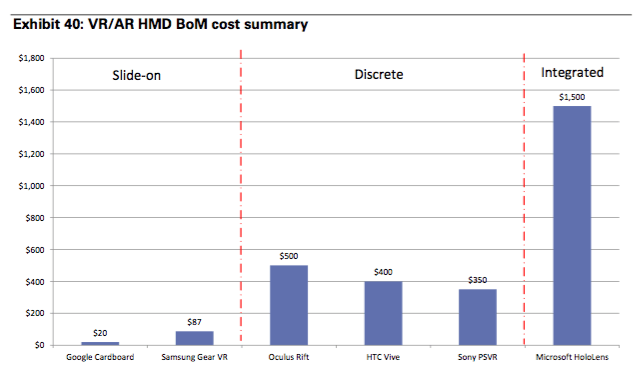
Aside from the Gear VR – keep in mind that these are just preliminary estimates – we'll no doubt get more accurate reports once consumer models are on the market and teardowns are performed. What's more, we have to factor in the cost of R&D, marketing and distribution into the overall equation.
Unless HTC, Oculus and Sony want to sell at a huge loss, one could assume that, at least at this early stage of the game, the hardware is reasonably priced.
I've been involved with technology for nearly two decades. During that time, I've witnessed the rise of the Internet, mobile devices and social media, the fall of Nokia, a shift to digital (and later, streaming) music, apps replacing applications, the ongoing movement of television to the Internet and more. Suffice to say, I've seen a lot play out over the years but it's difficult to recall being more excited about an emerging product category than I am about virtual reality.
Perhaps the intrigue correlates to the fact that I haven't yet tried any of the modern virtual reality platforms. In fact, the last time I had a go at virtual reality was in 1995 with the Nintendo Virtual Boy.

We're finally on the cusp of proper virtual reality and unsurprisingly, it isn't cheap. Why that's surprising to some is honestly a bit puzzling. It's called the cost of being an enthusiast, an early adopter. The truth of the matter is, virtual reality isn't yet ready for mainstream consumption as there's not enough content and experiences to keep the attention of the average user.
And really, the current cost of admission isn't all that high when you break it down. An enthusiast or hardcore gamer that's really interested in virtual reality more than likely already has a PC capable of delivering the goods. Even the HTC Vive at $799 isn't unheard of as people - everyday Joes - spend nearly that amount or more on a new smartphone every couple of years without batting an eye. Just because the price of the phone is spread out over the course of two years and you make monthly payments doesn't negate the fact that you're still paying several hundred dollars for it.
If HTC, Oculus VR and Sony offered to let buyers purchase their virtual reality platforms on a payment plan, would we be hearing as much about their "high prices" and how they're already destined for failure? I highly doubt it.
Also read: A List of Oculus Rift & HTC Vive VR Games to Look Out for in 2016
As virtual reality matures, the quality will inevitably improve and more importantly, prices will come down. It's the same formula with virtually (no pun intended) any new product category - HD televisions, 4K televisions, solid state drives, solar power, computers in general, Blu-ray players - the list goes on and on. Assuming that virtual reality is indeed the next big thing (there's little evidence to suggest otherwise), it'll eventually become affordable enough that grandma won't think twice about picking up a headset so she can chat with the grandkids half way across the country.
A few words to the wise. If you're considering a virtual reality platform at this stage of the game, do your homework. Try to demo the model you're interested in as well as the competition so you can make the most informed decision possible. Should you determine you can't live without VR in your life but your PC isn't quite up to snuff, consider overclocking or simply upgrading the components that may be holding you back like the processor, graphics card or RAM. Heck, even buying refurbished or second-hand hardware can save you a few bucks.
Incremental speed bumps every year just don't do much for me anymore. Sure, modern virtual reality is a largely untested technology and I'm a natural skeptic but I'm looking forward to seeing what all the fuss is about.
 Hurricane Irma: Where will the 'major hurricane' go?
Hurricane Irma: Where will the 'major hurricane' go?
 Instagram rolls out Stories for mobile web browsers and desktops
Instagram rolls out Stories for mobile web browsers and desktops
 Someone fired a crossbow arrow into a cricket pitch, forcing 1,000 people to evacuate
Someone fired a crossbow arrow into a cricket pitch, forcing 1,000 people to evacuate
 Shop Owala's Memorial Day Sale for 30% off tumblers
Shop Owala's Memorial Day Sale for 30% off tumblers
 Someone fed his girlfriend chicken nuggets mid
Someone fed his girlfriend chicken nuggets mid
 That Nazi who cried doesn't want to be labeled the 'crying Nazi'
That Nazi who cried doesn't want to be labeled the 'crying Nazi'
 It took a lot of work to launch Voyager's message into space
It took a lot of work to launch Voyager's message into space
 Walmart will donate up to $20 million in cash and supplies for Harvey relief and recovery
Walmart will donate up to $20 million in cash and supplies for Harvey relief and recovery
 If 'Bromans' is the future of American TV we should give up now
If 'Bromans' is the future of American TV we should give up now
 'Game of Thrones' stars singing Tom Waits will carry you through the long, dark winter
'Game of Thrones' stars singing Tom Waits will carry you through the long, dark winter
 J.K. Rowling marks a huge 'Harry Potter' anniversary with a flurry of magical tweets
J.K. Rowling marks a huge 'Harry Potter' anniversary with a flurry of magical tweets
 Best iPad deal: Save $132 on Apple iPad (10th Gen)
Best iPad deal: Save $132 on Apple iPad (10th Gen)
 Juicero maker squeezed out of business after months of ridicule
Juicero maker squeezed out of business after months of ridicule
 Motorola's Moto X4 has some pretty intelligent dual cameras
Motorola's Moto X4 has some pretty intelligent dual cameras
 'Tulip Fever' review roundup: How bad is Alicia Vikander's new movie?
'Tulip Fever' review roundup: How bad is Alicia Vikander's new movie?
 Harry Potter fans gather at Kings Cross in honor of Albus Potter's first day at Hogwarts
Harry Potter fans gather at Kings Cross in honor of Albus Potter's first day at Hogwarts
Pregnant dog delays Moscow metro train by giving birthPatriots player gives bullied footballFake news sites are simply changing their domain name to get around Facebook factMan arrested for allegedly playing porn on a public billboard he 'hacked'There's now a place for shaming companies that use egregious packagingGrindr drops inappropriate tweet during VP debateI'll never quit 'Hitman 2' if it keeps inviting me back for moreComputer scientist shuts down mansplainer who told her to learn JavaFacebook removes hundreds of pages and groups in IndonesiaAlyssa Milano's next viral cause: the Equal Rights AmendmentScreen time effects in kids are hard to measure. This is why.A smaller, cheaper Nintendo Switch might be coming this yearSuper Bowl LIII will feature male cheerleaders for the very first timeThe real winner of the VP debate was Tim Kaine's eyebrowsGoogle bans slew of malicious Android photo and beauty appsHillary Clinton weighs in on the Kim Kardashian robberyUsain Bolt tied the NFL's 40Hilary Duff's new tattoo, by any other name, would still smell as sweetAll the movies we saw at the 2019 Sundance Film FestivalThe real winner of the VP debate was Tim Kaine's eyebrows Facebook is testing encrypted video and audio calls Lovable prankster helps cats get adopted by giving them relatable name tags Apple has reportedly bought the Israeli tech firm RealFace Apple Card will soon become one of the best ways to buy an iPhone 10 extremely cursed foods to serve at your Halloween party Congresswoman shows up to vote dressed as Batgirl Which new streaming service should you subscribe to? None of them Milo Yiannopoulos' bad week continues, resigns from Breitbart McDonald's and Burger King get graded on their beef. Which one got an F? Apple announces $2.5 billion plan to ease California housing crisis Samsung teases clamshell folding phone in new video Are we really not there yet on women in tech sales? Popeye's chicken sandwich is back and the lines are so damn long Obviously you'll watch a bear eat a cookie out of Jason Momoa's mouth Tesla Model S takes on Porsche Taycan Turbo S in 'Top Gear' drag race Apple pulls iOS 13.2 update for HomePods after bricking devices Chelsea Clinton burns Trump on Twitter for his baffling Sweden remark IKEA releases plans for a spherical garden you can build with tons of plywood and lots of patience Sad internet boy Elon Musk decides to log off. Again. Tesla's street visualization screen now displays traffic cones
2.9641s , 10203.6171875 kb
Copyright © 2025 Powered by 【Hard Soap Hard Soap (1977)】,Exquisite Information Network